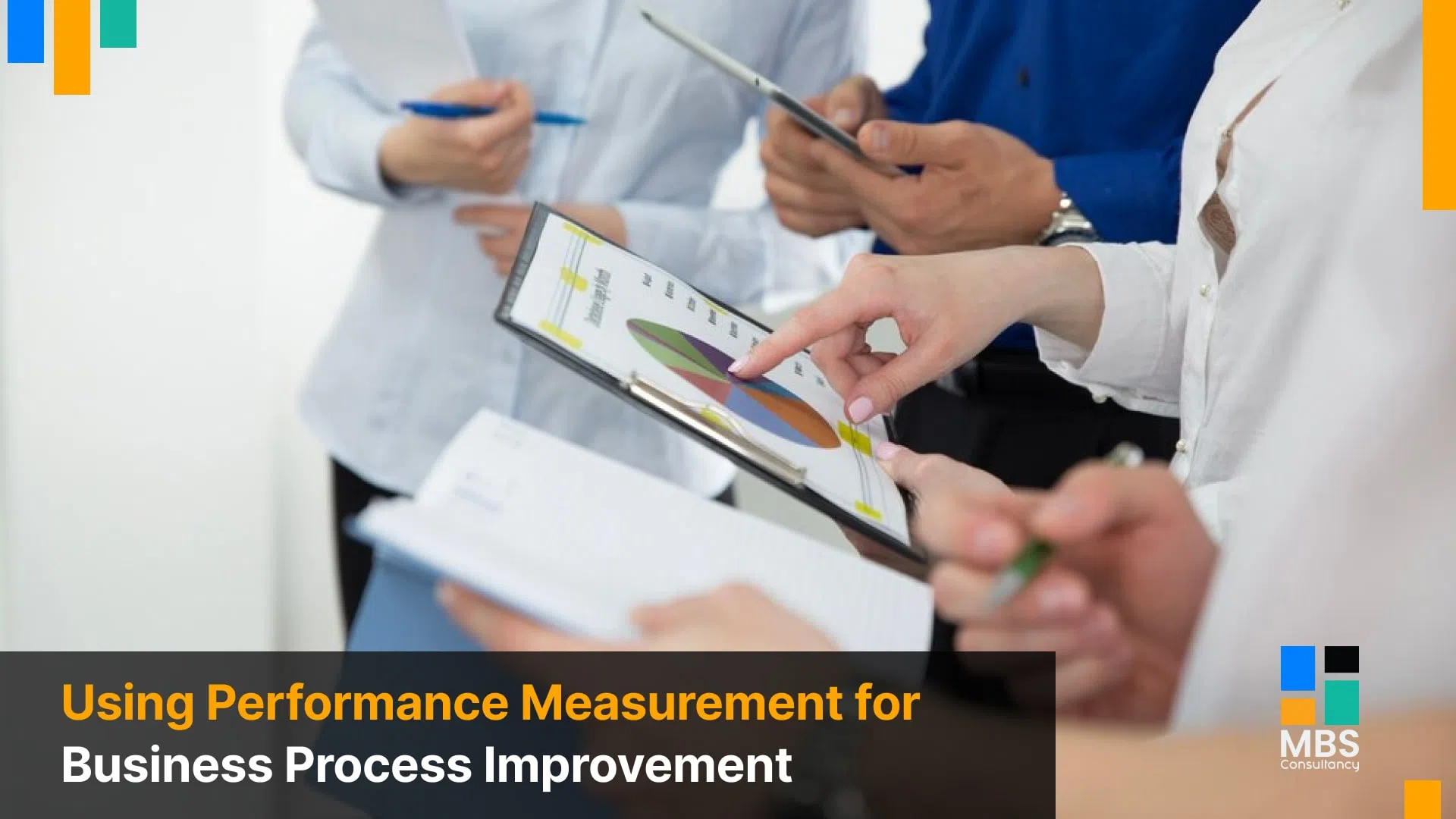Business performance monitoring and improvement are systematic methods. They enable an organization to consistently collect and use critical program and operations data. These practices play a major role in Business Process Improvement, helping teams optimize their capacity for efficient progress in their targeted societal impact.
The most effective performance assessment systems are often the domain of an organization’s staff members. They use initiative, monetary, and organizational information to assess the organization’s development and Business Process Improvement strategies.
Understanding business process improvement metrics
Manufacturing process improvement indicators are critical for determining the overall performance of any firm in this sector. Indeed, these precise metrics enable measurement, analysis, and adjustment of each operation step, resulting in smoother, more efficient output.
Process-specific indicators, such as key performance indicators, serve as measurements for continuous improvement. However, their objective differs: they want to improve production processes by analyzing cycle duration, yield rate, and overall equipment efficiency statistics.
Process performance indicators are critical strategic tools that provide a solid foundation for optimizing operations and business functions.
Monitoring business process metrics is critical for process optimization, improving customer happiness, making logical decisions, and contributing to ongoing improvement.
This naturally aligns with a strong business process improvement model that organizations can adapt for long-term efficiency and competitiveness.
Why do Businesses need Performance Measurement for Process Improvement?
Measuring company performance is crucial for successful plan design and execution. It may also assist in uncovering roadblocks and setbacks that affect the progress of your business, comparable to risk management.
Performance measurement refers to the structured, information-based practices and processes that managers use to sustain or change trends in organizational activity.
Performance tracking enables you and your organization’s executives, investors, and workers to understand how your duties and responsibilities link to your company’s strategy, fostering a sense of liability and dedication to accomplishing goals and objectives.
It is also an essential part of driving business growth through proactive adjustments and resource allocation.
Impact of performance measurement on process improvement
Process performance is the effectiveness with which a business process performs its intended purpose. It is a critical component of operational effectiveness intrinsically connected to a company’s profitability and development.
Measuring Business Process Improvement shows the route to continual improvement by highlighting areas of inefficiencies or inadequate performance.
It helps to achieve corporate objectives and plans, promotes improved decision-making, and drives Business Expansion and development.
How do you use performance measurement for process improvement in businesses?
Performance assessment allows a business to constantly learn and develop, improving outcomes. The metrics or data points recorded should be based on an organization’s desired effect and theory of change—what the company holds itself responsible for and how it will get there.
Measuring performance allows NGOs to track progress and hold themselves accountable for their desired effect and theory of change.
- Ensure that programs or initiatives are executed as envisioned.
- Learn how to get even better outcomes by evaluating insights.
- Communicate accomplishments and triumph internally and publicly to personnel, beneficiaries, donors, peer entities, and the larger community.
- Over time, learn about program efficiency and what performs better, and prepare comprehensive program assessments.
Establish apparent meaningful metrics:
Before you begin any business process improvement initiative, describe your goals and how you intend to assess them. Choose metrics that align with your overall objectives, apply them to your process, and be quantitative.
To optimize the order fulfillment process, you may utilize data like cycle time, mistake level, customer happiness, and revenue. Create a baseline for your present performance and set reasonable and achievable goals for growth.
Adopt an appropriate scorecard:
A balanced scorecard is an instrument for monitoring and evaluating your business process improvement endeavors from four distinctive viewpoints: financial, clientele, internal procedure, training, and growth.
Utilizing a balanced scorecard, you can monitor the effect of your business process strategy on many elements of your organization and discover any gaps or negotiations.
For instance, you can discover that you have cut expenses and enhanced efficiency, decreasing customer happiness and staff engagement. A balanced scorecard may help you counterbalance these results and change your business process improvement as needed.
Retrieve and inspect data:
Data is essential for monitoring and analyzing the effect of your business process improvement. Compile data from various resources, including surveys, assessments, findings, records, and systems, to acquire a complete and accurate perspective of your process’ performance.
Use suitable data analysis methods and tools, including charts, graphs, reports, and statistical approaches, to detect trends, patterns, and associations.
To evaluate your progression and accomplishment, compare your data to your baseline, objectives, industry standards, and best practices.
Share and report the outcomes:
Transparency and reporting are critical to business achievement and the long-term viability of your business. Share and present your findings to your stakeholders, including management, workers, customers, and partners, so they are aware of your accomplishments, difficulties, and lessons learned.
You should also utilize your outcomes to reflect on your achievements, acknowledge your team, and inspire your employees. Furthermore, use the data to give feedback, discover areas for growth, and plan your future moves.
Effective methods for measuring business performance
How do we evaluate these metrics for business performance measurement? These subsequent techniques are frequently employed.

Business process mapping:
Business process mapping involves generating a visual depiction of the procedure, which provides a comprehensive view of every aspect of the process flow.
It’s one of the core methods in the business process improvement cycle, helping stakeholders visualize inefficiencies and bottlenecks.
Six sigma approach:
The Six Sigma Approach focuses on minimizing process variance and increasing quality, often resulting in improved client fulfillment and cost reduction.
Empirical workflow control:
This approach incorporates statistical techniques for tracking and regulating a process, promoting decisions based on data and analytics.
Comparisons:
Comparing the accomplishments of an organization to standard procedures in the industry or competitors to identify possibilities for development.
Deal with process and mining data:
More frequently, business process performance is evaluated through digital process assessment tools, such as mining process software and task mining techniques. This is a key part of modern strategies on how to improve business process through data-driven insights.
Essential considerations for measuring business performance
Business financial objectives and targets:
Financial objectives serve as the foundation for measuring corporate success. It is mainly because your company’s monetary worth is the first sign of achievement or failure.
Financial objectives also assist in guaranteeing that your diagnostic control systems efficiently monitor profitability and give guidance on how to solve issues.
To create financial objectives, employ a profit plan, which describes a single financial time frame’s expected revenue inflows and expenditure outflows provided in the context of an income statement.
Profit planning serves numerous goals, the most essential of which is establishing control mechanisms that assign liability to management.
Business non-financial perspectives:
Non-financial business objectives can affect your long-term achievements. However, financial metrics are essential to evaluate short-term revenue and profits.
Some essential objectives, such as enhanced client fulfillment, extended staff engagement, and best ethical practices, can boost your Business Process Improvement performance, whether financial or non-financial.
Measuring performance for intangible assets:
Business objectives and goals are not the only perspectives for measuring Business Process Improvement. Non-physical or intangible business valuables, such as patents, trademarks, copyrights, and brand identity that your business significantly values, can also help to maintain your business process performance.
For instance, businesses concentrating on extending and keeping their brand identity can utilize a balanced scorecard to assess client fulfillment using surveys and testimonials.
The balanced scorecard provides a complete overview of business performance to assist you in making smart decisions while securing and extending your intangible valuables.
Conclusion
Measuring business process improvement is crucial for improved operations, efficiency, and organizational achievement. It is an ongoing process that needs continuous tracking and monitoring, reviewing performance metrics, implementing efficient tactics, and adapting cultural norms for a constant learning approach.




